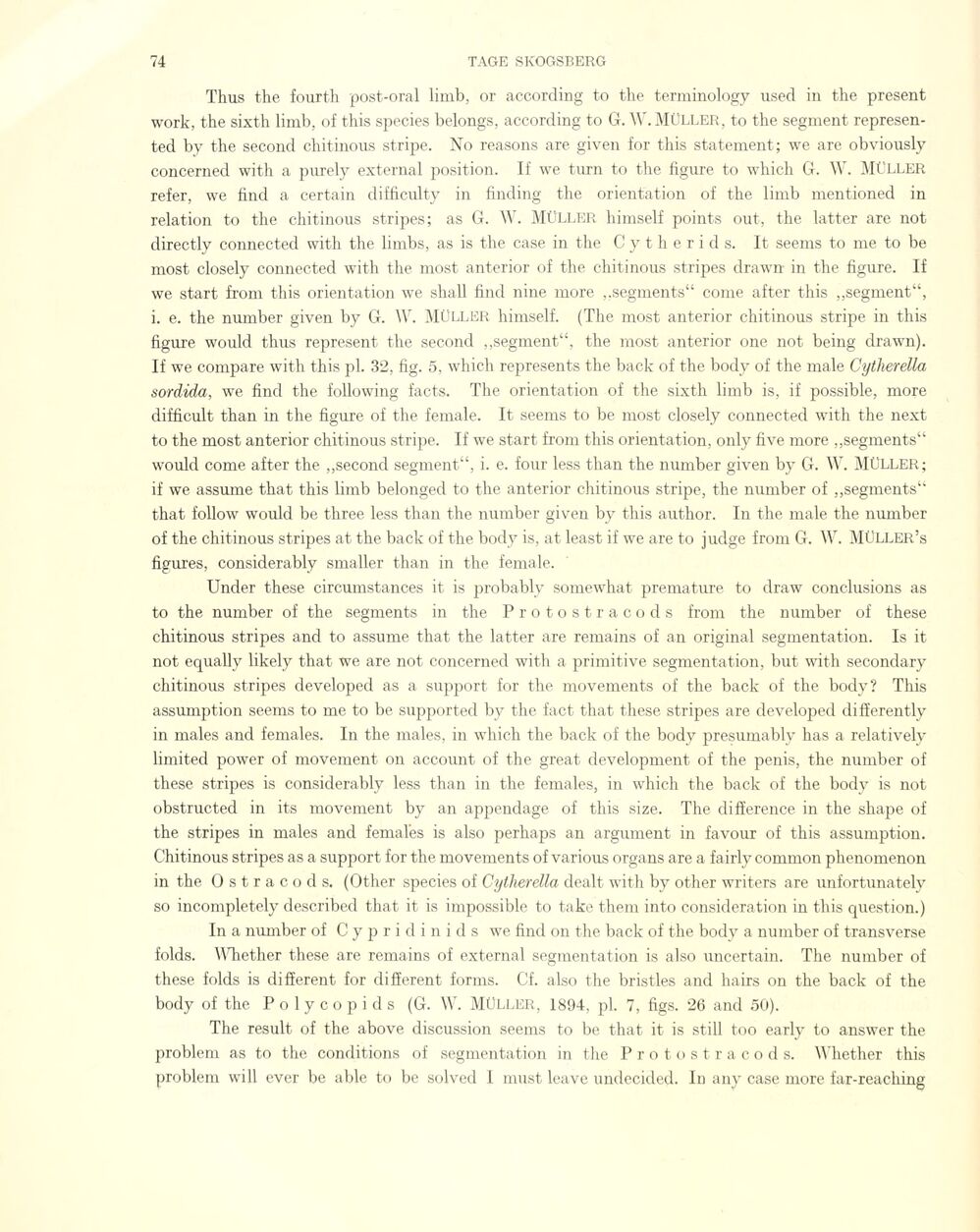
Full resolution (JPEG) - On this page / på denna sida - Sidor ...

<< prev. page << föreg. sida << >> nästa sida >> next page >>
Below is the raw OCR text
from the above scanned image.
Do you see an error? Proofread the page now!
Här nedan syns maskintolkade texten från faksimilbilden ovan.
Ser du något fel? Korrekturläs sidan nu!
This page has never been proofread. / Denna sida har aldrig korrekturlästs.
Thus the fourth post-oral limb, or according to the terminology used in the present
work, the sixth limb, of this species belongs, according to G. W. MÜLLER, to the segment
represented by the second chitinous stripe. No reasons are given for this statement; we are obviously
concerned with a purely external position. If we turn to the figure to which G. W. MÜLLER
refer, we find a certain difficulty in finding the orientation of the limb mentioned in
relation to the chitinous stripes; as G. W. MÜLLER himself points out, the latter are not
directly connected with the limbs, as is the case in the C y t h e r i d s. It seems to me to be
most closely connected with the most anterior of the chitinous stripes drawn in the figure. If
we start from this orientation we sliall find nine more „segments“ come after this „segment“,
i. e. the number given by G. IV. MÜLLER himself. (The most anterior chitinous stripe in this
figure would thus represent the second „segment“, the most anterior one not being drawn).
If we compare with this pi. 32, fig. 5. which represents the back of the body of the male Cytherella
sordida, we find the following facts. The orientation of the sixth limb is, if possible, more
difficult than in the figure of the female. It seems to be most closely connected with the next
to the most anterior chitinous stripe. If we start from this orientation, only five more „segments“
would come after the „second segment“, i. e. four less than the number given by G. W. MÜLLER;
if we assume that this limb belonged to the anterior chitinous stripe, the number of „segments“
that follow would be three less than the number given by this author. In the male the number
of the chitinous stripes at the back of the body is, at least if we are to judge from G. IV. MÜLLER’s
figures, considerably smaller than in the female.
Under these circumstances it is probably somewhat prématuré to draw conclusions as
to the number of the segments in the Protostracods from the number of these
chitinous stripes and to assume that the latter are remains of an original segmentation. Is it
not equally likely that we are not concerned with a primitive segmentation, but with secondary
chitinous stripes developed as a support for the movements of the back of the body? This
assump tion seems to me to be supported by the faet that these stripes are developed differently
in males and females. In the males, in which the back of the body presumably has a relatively
limited power of movement on accoimt of the great development of the penis, the number of
these stripes is considerably less than in the females, in which the back of the body is not
obstructed in its movement by an appendage of this size. The difference in the shape of
the stripes in males and females is also perhaps an argument in favour of this assumption.
Chitinous stripes as a support for the movements of various organs are a fairly common phenomenon
in the Ostracods. (Other species of Cytherella dealt with by other writers are unfortunately
so incompletely described that it is impossible to take them into considération in this question.)
In a number of Cypridinids we find on the back of the body a number of transverse
folds. Whether these are remains of external segmentation is also uncertain. The number of
these folds is different for different forms. Cf. also the bristles and hairs on the back of the
body of the P o 1 y c o p i d s (G. W. MÜLLER, 1894, pl. 7, figs. 26 and 50).
The result of the above discussion seems to be that it is still too early to answer the
problem as to the conditions of segmentation in the Protostracods. Whether this
problem will ever be able to be solved 1 must leave undecided. In any case more far-reaching
<< prev. page << föreg. sida << >> nästa sida >> next page >>